Features of the combat use of torpedo boats on the Black Sea
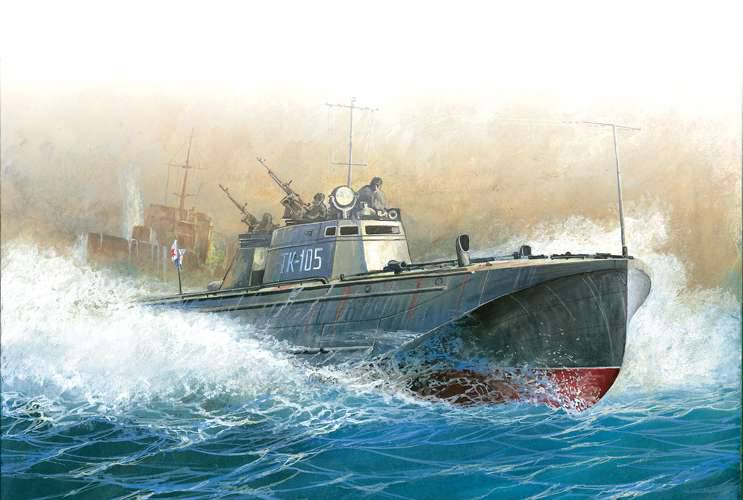
In 1928, under the leadership of the famous aircraft designer A.N. Tupolev designed and built the first Soviet torpedo boat "ANT-4". This was followed by a large series of boats of the "G-5" type, the number of which made it possible to create on fleets (except for the Northern) brigades and separate divisions of torpedo boats. Before the Great Patriotic War, the Black Sea Fleet had 2 brigades, a separate division and a detachment of torpedo boats.
The basic documents on the combat use of torpedo boats were the Temporary Combat Regulations of the Red Army 1937 Naval Forces (BU MU 37) and the Manual on the combat activities of torpedo boats (NBTKA). They noted the main purpose of the boats: delivering torpedo attacks on warships and enemy transport ships. In addition, it was said that torpedo boats could be used for antisubmarine defense of the squadron, support of patrols, smoke screens and the rapid transfer of sabotage and airborne groups. On the basis of these provisions, in the course of combat training, the main attention of the personnel was focused on working out shooting at large high-speed warships and ships. However, already in the first days of the Great Patriotic War, instead of the expected attacks of the large ships and transports of the enemy, the Black Sea boats had to solve new problems. The surface ships of the enemy did not decide on active operations on our communications. However, the Soviet torpedo boats, based in Ochakovo and Sevastopol, could not enter the enemy lines of communication between Sulina and Konstanz, since the distance to this area significantly exceeded their tactical radius.
During the period of defense of Odessa (August 5 - 16 October 1941), and then Sevastopol (October 30 1941 - July 4 1942), the main objectives of torpedo boats were: setting smoke screens for covering warships and transport ships from enemy artillery fire at the entrance and exit from Odessa and Sevastopol; participation in escorting ships on the Odessa-Sevastopol communications; Carrying out the guard service while simultaneously searching for submarines independently or together with the MO-4 hunting boats; clearance of fairways from bottom proximity mines by depth charge explosions.
The fulfillment of these tasks required the command, staffs of the formations and, especially, the direct executors, to search for new tactics and methods of action. For example, during the pre-war combat training, boat crews acquired skills in tactical methods of setting smoke screens when attacking ships at sea. However, the installation of a smoke screen at the fairways to the naval bases in the 1941 and 1942 years was carried out under enemy sighting fire, moreover, there was no opportunity to maneuver the courses. Therefore, the boat commanders had to do dozens of experiments, as a result of which the best option was found: shoot down aimed fire, maneuvering only with speeds. With the immobile barrage of fire, the boats hid behind the smoke curtain for a short time and, as soon as the enemy stopped shelling, they continued to set up smoke at high speed. It should be said that the new tactical method of staging the chimney curtain was used later, when the boats had to operate near the coast, in conditions that were constrained to maneuver.
The most difficult was the search for tactical methods, when torpedo boats were the only escort ships in convoys and were forced to protect transport ships from the strikes of enemy aircraft.
Effective were the actions of torpedo boats in the fight against submarines, going under the periscope or on the surface. In such cases, using high speed, the boatmen immediately attacked them and forced them to withdraw from the course of the convoys. Depth bombs were used to destroy non-contact mines. Bombing of mined water areas was carried out by groups consisting of 2-4 boats.
The tasks solved by Soviet torpedo boats have expanded since the fall of 1942. By this time, the overall situation at the Black Sea Theater has changed dramatically for the worse for us. The enemy captured the Crimean and Taman Peninsulas, which left airfields, ports and bases.
The Germans continued to increase their naval and air forces operating on our communications and striking at bases on the coast of the Caucasus, where the Black Sea Fleet ships were concentrated. By the end of 1942, the enemy fleet on the Black Sea was replenished with seven gunboats, 15 torpedo boats, 11 submarines, more than a hundred high-speed amphibious barges (BDB), 130 boats by minesweepers and patrolmen. At the same time, the enemy conducted an intensive transfer of troops and military equipment between the ports of Crimea and the Taman Peninsula. Naturally, all this caused an increase in the tension of the fighting torpedo boats. So, from July 1942 to March 1943 on our coastal communications, primarily between Tuapse and Sukhumi, where there was a clear lack of anti-submarine forces, enemy submarines launched a lot of activity. Torpedo boats joined the fight against them. Located at the base in Tuapse and part of the forces in Sochi, at high speed, the front systems searched for submarines along the course of movement of our convoys, as well as carrying out preventive bombing, driving submarines to depth and preventing their ascent to attack. This method was effective. In a given area of the boat performing several tacks, facilitating the actions accompanying the convoys, escort forces.
At one time, enemy submarines in the dark began to fire at the trains going along the coastal railway from guns. At the suggestion of the commander of the battalion of captain-lieutenant V.A. Rybakov began to convoy them with torpedo boats. The latter followed along the coast by a ledge, somewhat ahead of the train, but with the same speed with it, forcing the enemy to go deep. At the same time, the remoteness of torpedo boats from the coast was determined by the capabilities of artillery systems installed on submarines. The threat of bombardment of our trains by boatmen was eliminated.
It is worthwhile to dwell on the strikes of torpedo boats on ships and transport ships stationed in ports. Such blows were called raids. It should be said that in the interwar years, many experts considered the raids of boats on well-protected ports to be almost impossible. In peacetime, the development of such tasks was not given the necessary attention. "BU MC 37" provided only an attack during the war on the anchorage of ships. However, the hostilities made appropriate adjustments to the theoretical positions. The situation on the Black Sea demanded from torpedo boats to strike at ships that were not only on raids. The first such task was performed by the crews of the detachment of the torpedo boats of Senior Lieutenant K. Kochiev, who developed a plan for the raid on the Yalta port. The commander of the 2 th brigade of torpedo boats S.S. Savin approved this plan. On the night of June 14 1942, the detachment commander on a boat of the D-3 type went to sea. The transition, which lasted seven and a half hours, went well. On the approach to the port, the boat slowed down to the smallest, turned on the silencers, and from the 1.5 distance the cable (270 m) attacked the barge with a torpedo and sank it. The enemy opened heavy artillery and machine-gun fire on the D-3. Responding to machine-gun fire and hiding behind a smoke screen, the boat left the shelling zone and arrived safely at the base.
This success was achieved as a result of surprise and tactically competent actions with K. Kochiev. Three days later, he was on an SM-3-type boat with D-3 out of Anapa to repeat the raid on the Yalta port, where, according to air reconnaissance data, there were surface ships and a submarine. In 03 h 45 min, a patrol torpedo boat of the enemy was found at Cape Aytodor, which made a request with light signals and lay on a parallel course. The boatswain SM-3, on orders from the commander, responding to the request, made interruptions, portraying the malfunction of the signal light. Cunning success. Having taken the Soviet boats for their own, the enemy boat increased speed. Having determined that the passage in the side fence was open, the detachment commander ordered the ships to be torpedoed. It was subsequently established that the tugboat was sunk as a result of the attack, the submarine and port facilities were damaged. Coming to their senses, the fascists opened artillery and machine-gun fire on boats, lighting them with searchlights. Maneuvering, firing and hiding behind smoke curtains, the boats moved into the sea. SM-3 received about 80 holes, five people from its crew were killed and three injured.
After the renewal of the SM-3 and D-3 2 in August 1942, the ships left Anapa in Feodosia Bay, where, according to intelligence data, transport ships were hidden in Dvuyakornaya Bay with coastal artillery and ship patrols. This prevented the achievement of surprise. However, the weather (northwest wind, 5-6 points, visibility - less than a kilometer) helped the boatmen secretly bypass patrols. Near the coast occupied by the Germans, they went unnoticed to Dvuyakornaya Bay and attacked two barges anchored and sank them.
After leaving Anapa and Novorossiysk, the boats of the G-5 were relocated under Gelendzhik. The enemy for the transportation of military cargo by sea actively used Anapa, the port of which had a shallow water area. This feature of the port, as well as the fire of coastal and naval artillery significantly complicated the actions of boats, but they, showing courage, initiative and resourcefulness, broke into the port and drowned the enemy ships. Only in one year, since June 1942, has the enemy lost 16 barges loaded with equipment, weapons and living force. The systematic raids of torpedo boats forced the Germans to significantly reduce the volume of shipments of weapons, troops and ammunition by sea. The success of the Black Sea coast in this important form of combat activity could be much greater, provided that not two or three boats, but dozens participated in the raids. But the need of the fleet for them to perform other tasks was also very high. For example, in August and September 1942 from the 425 exits of the boat of the 1 brigade, only 42 exits were made for raiding actions, and the rest for escorting transports (176), various transports (127), covering with smoke curtains (64), etc. d.
After our paratroopers captured in February 1943, the bridgehead near Novorossiysk (Small Land), torpedo boats were used in convoys in the Gelendzhik-Myskhako sector. The importance of this task was determined by the fact that the viability and success of the combat activities of the landing forces on Malaya Zemlya were directly dependent on their regular supply through a single maritime communication.
Torpedo boats had to re-work independent and joint, with small hunters MO, actions during the convoy of vessels. The tactics of independent action boiled down to the following: having overtaken the convoy that had left Gelendzhik, they occupied the watch line in order to prevent the enemy from breaking through for her. With the appearance of the enemy ships, the boats promptly attacked them and thwarted attempts to prevent the movement of the convoy or the unloading of personnel, weapons and ammunition. At the same time smoke screens were installed. The fascists did not dare to cross them, fearing a sudden strike. Such tactics gave our boatmen the opportunity to independently disrupt the plans of the superior enemy in forces, preventing them from escorting them to the distance of torpedo and artillery firing. Boats of the MO type were the main means of artillery combat. Having completed the landing of personnel on the bridgehead, they were located in the center of the watch line, and the torpedo boats — to the right and left of them. When the enemy, having tied our patrol boats with the battle, partly tried to bypass the patrol, torpedo boats entered the business, intercepting the enemy and forcing him to retreat into the sea.
In May, the 1943 of the Black Sea Fleet arrived with six boats that were equipped with RS installations (M-8-M), which in turn allowed the 24 rocket of the 82 caliber mm to be launched in one gulp or another. The presence on the boats of three ammunition made them a powerful means of combating the sea and land adversary. Possessing the experience of raiding actions, the Black Sea people quickly mastered the methods of delivering fire strikes with rocket projectiles at ground targets: clusters near the coast of manpower and equipment, artillery batteries, searchlights, airplanes at airfields, etc. The main tactics of action were as follows: a strike group of two Four boats were firing at the RS, and the 2-4 torpedo boats covered it with smoke curtains and distracted the enemy’s attention to themselves. In this way, in the beginning of June 1943, in the area of Yuzhnaya Ozereyka, they attacked an artillery battery and brought it down. No less effective strikes of the boat were systematically inflicted on the airfield, the port of Anapa and other important objects. It was much more difficult to fight small, highly mobile naval targets, such as enemy torpedo and patrol boats and high-speed landing barges. However, the Black Sea people have found a way to hit such targets, using volley fire.
Especially effective were the joint actions of torpedo and artillery boats against enemy transports and small vessels during the liberation of the Crimea in the spring of 1944. In contrast to strikes on coastal targets in sea battles, the main striking force was torpedo boats, while boats with RSs supported them with their fire. The fact is that at that time the enemy was heavily guarded by all transport ships. In order to get close to them at a distance of 200-500 m, torpedo boats had to overcome the resistance of escort ships and get out to attack at course angles of 60-100 °. Only such short distances and large course angles of a torpedo salvo ensured the greatest probability of hitting a target that had a length in the underwater part of 30-40 m, i.e., in 4,5-6 times smaller than that provided by the pre-war rules, firing tables and launch sights. For firing rockets, the course angle and the distance did not have such a fundamental value. Therefore, boats with jet installations were usually located on sharp course corners and were the first to start a battle with security, maneuvering and pulling it off to themselves. This allowed torpedo boats to come closer relatively safely to transport and to drown it from a short distance.
As mentioned above, torpedo boats were attracted for the implementation of mine settings in the waters controlled by the enemy, on his fairway and at the bases. The task of setting mines turned out to be new and unexpected for them. And since it was necessary to lay mines of all samples, starting from bottom non-contact ones and ending with anchor river, then simultaneously with the development of methods of actions, many technical issues had to be resolved on placing, fixing and dropping mines overboard. The commanders were required to maximize the accuracy of mines at given points (namely, points, not areas), while respecting the secrecy of actions, as well as preventing combat contact with the enemy. In order to fulfill all these conditions, we had to solve a whole range of technical and tactical problems, starting with careful preparation of very poor navigation equipment of boats (there are only two magnetic compasses), double definition of deviation (with and without mines) and ending with the development of combat support.
The first production was carried out in Anapa and in the Kerch Strait in the night from 24 to 25 in May 1943, the 10 th torpedo boats, each of which had four 500-kilogram bottom non-contact mines. They were covered with 5 torpedo tubes, 3 boats with jet installations and 2 boats of the MO type. Smoke curtains were placed during the laying of mines. Two aircraft MBR-2 distracted the enemy's attention by bombing at a predetermined coastal targets - anti-aircraft batteries. Eight days later, it became known that a tug, a large dry-cargo barge and a minesweeper were blown up on the delivered mines in the Kerch Strait.
After the first successful mine production on the orders of the Navy Commissar of the Navy, Admiral N. G. Kuznetsova from 14 June to 28 August 1 th and 2 brigade of torpedo boats made more 15 productions mostly contact mines in the Kerch Strait and on the coastal communication going from it to Anapa. A total of 456 mines and 160 mine defenders were supplied, which forced the enemy to increase trawling, attracting a large number of minesweepers and escort ships. The fascists sometimes even had to close the fairways, which negatively affected the intensity of the transport of military goods.
Torpedo boats were widely used in the landing actions of the Black Sea Fleet. In the pre-war years, it was believed that torpedo boats could only be a means of quickly transferring sabotage and airborne groups. These theoretical principles were confirmed during the Kerch-Feodosiya landing operation, but later their tasks became much more complicated. So, in the Novorossiysk landing operation in the autumn of 1943, the main ones were: destruction and suppression of fire weapons located on moles and the shore; destruction of the steel cable that blocked the entrance to the port; destruction of two sections of the bono-network barrier inside the port (anti-torpedo nets suspended on metal balls - “barrels”). Without successful solution of these tasks, there was no question of disembarking the port, therefore special groups of boats were created: to eliminate barriers, attack fire funds on moles and on the shore, a breakthrough in the port. Kaperniki carefully prepared for the upcoming operation. The most difficult thing turned out to be to “force” torpedoes to explode, not with a frontal impact on the target, but when the inertia is redeemed on a gentle coast. A lot of experiments were done by the sailors in order to find a way to undermine the steel cable that blocked the entrance to the port with trapelling devices, as well as to destroy metal balls - “barrels” in the port. All these and other very complex technical problems (including such as towing speedboats of boats such as KM and limousines) were solved. A lot of work katerniki invested in the search for the most effective tactical methods of action that should be performed in a matter of seconds.
After the implementation of preparatory measures, the combat support detachment (27 torpedoes, 4 with jet installations, 2 of type KM and 2 of offshore boats) made a secret transition and took the initial position. In 2 h 44 mines 10 September, the battle began for the landing of troops. Immediately to the entrance to the port rushed groups lacquering. They broke the cable stretched under the water between the moles, destroyed inside the port most of the metal balls - “barrels” that supported the anti-torpedo nets. Simultaneously, 7 launches torpedo attacks on pillboxes on moles, destroying almost all of them. Torpedo explosions destroyed many firing points on the shore. Thus, the seamen fulfilled the main task successfully: they eliminated the most dangerous obstacles, powerful fire weapons at the moles and ashore. 22 pillboxes and bunker were destroyed, 1 searchlight and 10 firing points were destroyed, which allowed the airborne units to disembark.
Katerinniki showed mass heroism and skill. Here is one example. At the entrance to the port of Novorossiysk, the enemy illuminated the boat of Lieutenant B.M. Pershina and knocked him with artillery fire. The torpedo boat of Lieutenant GF was walking next to him. Meisterovic turned round and fired torpedoes at the location of the searchlight and the firing point. After a few seconds, a powerful explosion rang out, the searchlight went out and the fire stopped. These reasonable actions of the officer provided an invaluable service to the airborne detachments: they were no longer subjected to the disastrous dagger-fire at the entrance to the port.
Especially distinguished boatmen on the night of September 11, when the enemy, recovering from the first strikes and pulling up reserves, had a strong opposition to the paratroopers, covering the approaches to the port with multi-layered fire to prevent the delivery of second-tier troops. About any suddenness there could be no question. Only the savvy and courage of the Black Sea allowed them to break through the "gates of death" (the entrance to the port, which was then called boiling from the explosions of the shells, was called that way) and deliver replenishment. The commanders of the boats used this method: they were going in full swing towards the port, on the approaches to which the fascists concentrated the maximum of fire. But with the approach to the fire curtain, the boat was sharply turned to the pier, stopping the course. In this case, the enemy lost sight of them, weakened or completely stopped the fire. Using this, the sailors had time at high speed to break into the port. Despite the losses, the boatmen managed overnight, with a fight, to land the Marines in the port of 360.
In subsequent landing operations, the fleet command used these boats as mobile and reliable forces, not only for combat support purposes, but also for the independent landing of forward detachments. So, on September 19, when the troops of the 318 th rifle division were fighting on the outskirts of Anapa, torpedo boats, with the support of artillery boats, broke through to the pier and landed a company of marine infantry, who quickly cleared the port of fascists. On the night of September 27, forward detachments of this brigade in the number of 542 people near Salt Lake were landed with torpedo boats. It should be noted that in the area of this lake, for the first time in the practice of torpedo boats, they had to land assault forces by day and under heavy fire. But even in such conditions, the boatmen, dispersed along the front, managed to land the paratroopers without a loss, although they themselves suffered losses in people.
A lot of new tactics were used by officers of torpedo boats in the Kerch-Eltigen landing operation. In the shallow water of the Kerch Strait, our sailors found a way to overcome the anti-cocking minefields at high speeds and strike at the superior forces, consisting of special artillery BDB, patrol and torpedo boats. Using torpedo weapons, they sank and damaged 12 enemy ships.
During the war years, the Black Sea Fleet torpedo boats found wide combat use. During the defense of Odessa and Sevastopol, they carried out patrol service, covered warships with smoke screens at their entry and exit from bases, participated in escorting our ships and fighting enemy submarines, and destroyed bottom non-contact mines. During the defense of the Caucasus, the tactics of striking torpedo boats to secure ports and raids, escorting, using them in landing operations and mine setting were improved. During the offensive battles, joint strikes of torpedo and artillery boats on enemy ships on communications received further development. 12 riders for bravery and courage were awarded the high title of Hero of the Soviet Union, hundreds of sailors, officers and officers were awarded orders and medals.
Sources:
Taras A., Kalmykov D., Kalmykova I. Tactics of torpedo boats of the Soviet Navy. // History small torpedo ships. Mn .: Harvest, 1999. C. 247-254.
Voronin K. On the Black Sea fairway. - M .: Military Publishing, 1989. C. 11-12, 40-43, 106-110.
Protsenko V. Tactics of torpedo boats of the Black Sea fleet. // Military History Journal. 1974. No.12. C. 35-38.
Pharafonov M. Torpedo boats in battle. // Boats and yachts. 1975. No.2.
Chernikov I. Arms of victory. The use of jet installations on torpedo boats. // Boats and yachts. 1985. No.3.
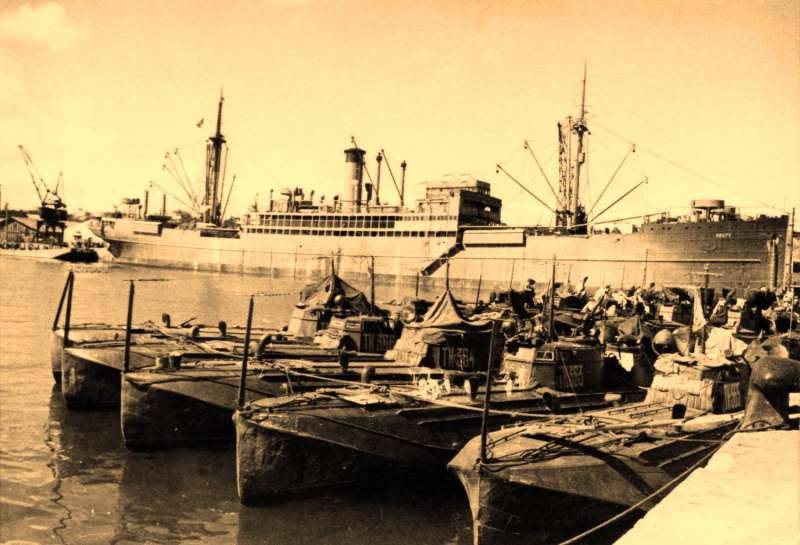
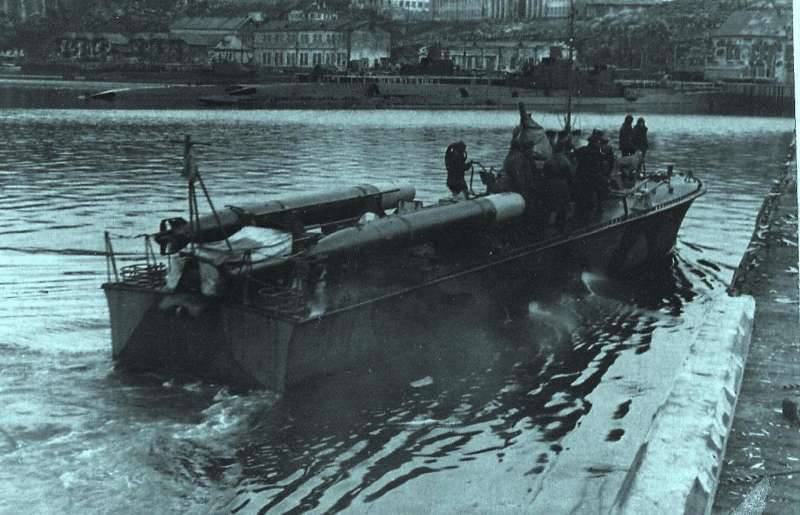
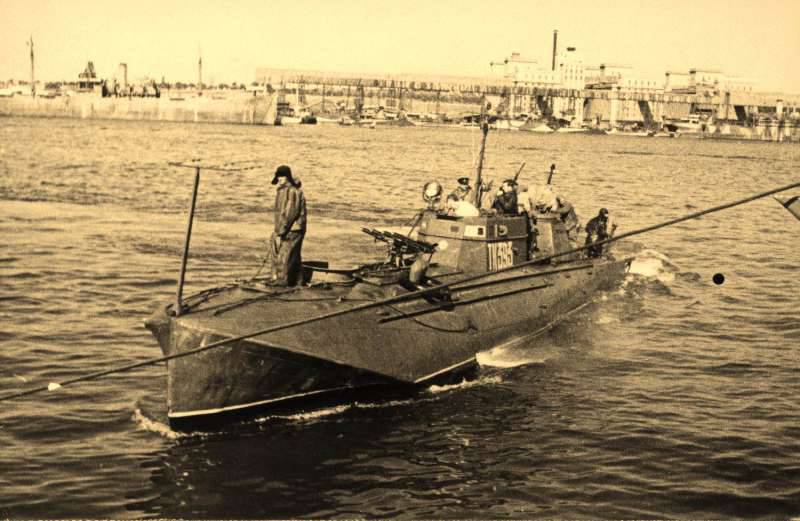
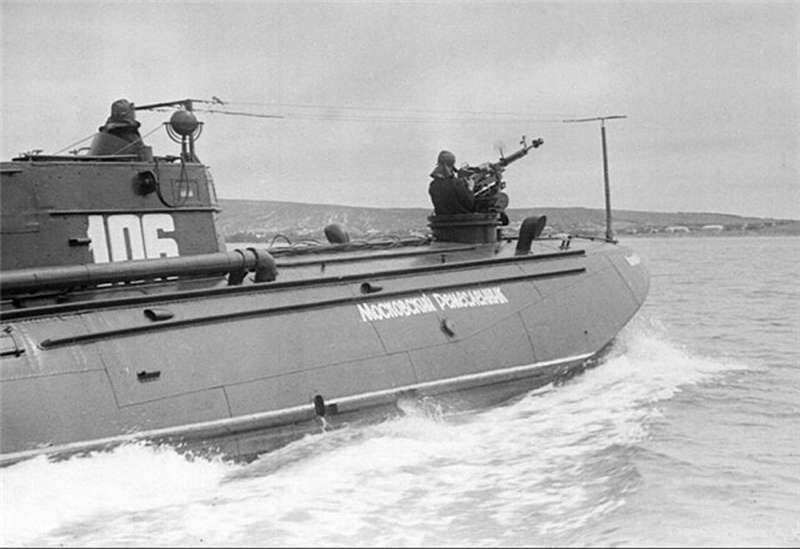
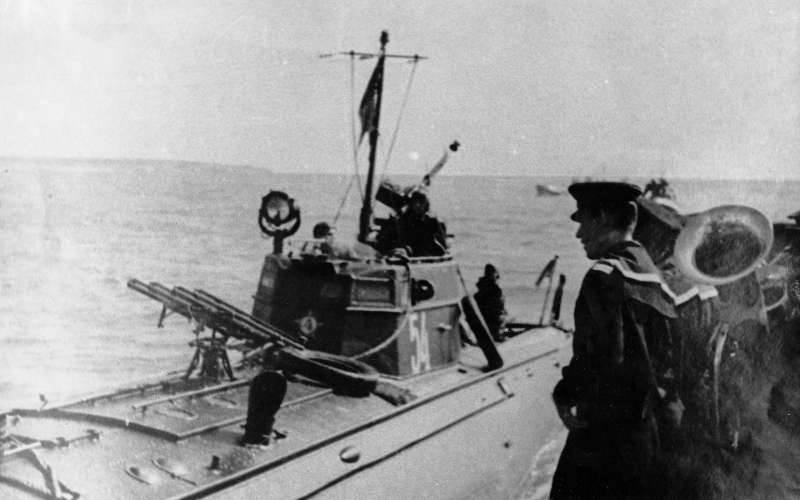
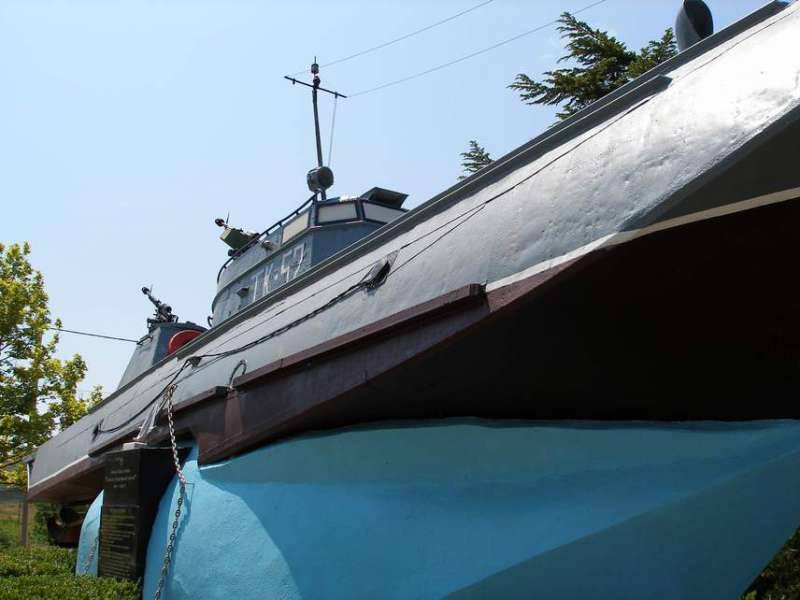
Information